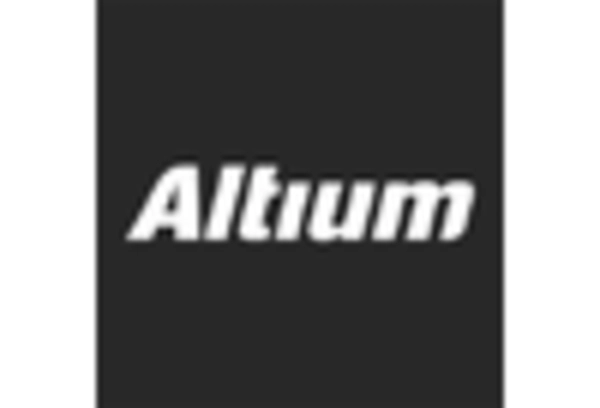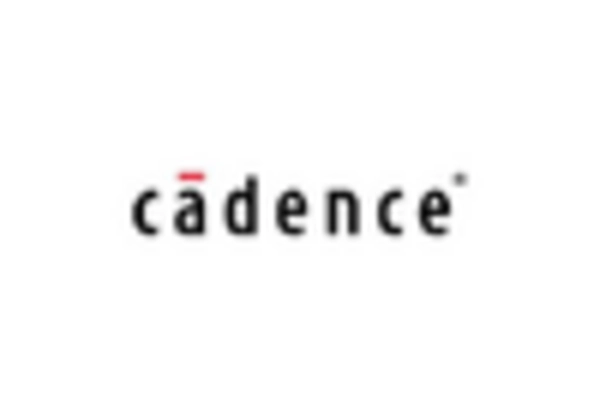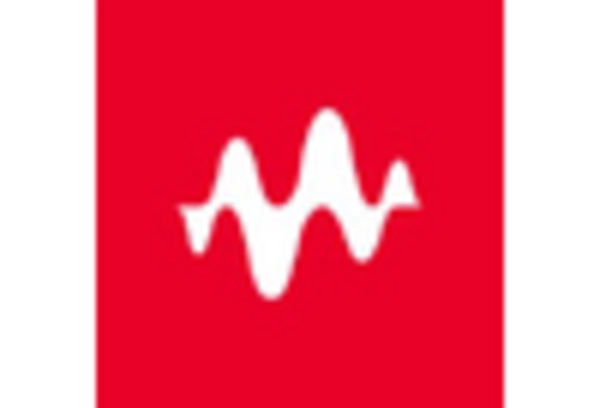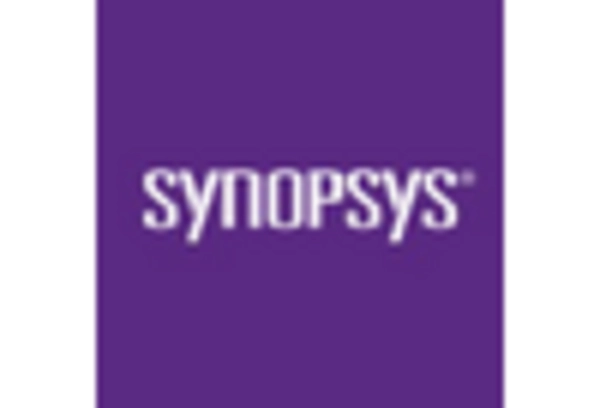The cloud electronic-design-automation market in Germany is characterized by a dynamic competitive landscape, driven by rapid technological advancements and increasing demand for efficient design solutions. Key players such as Synopsys (US), Cadence Design Systems (US), and Siemens EDA (US) are at the forefront, each adopting distinct strategies to enhance their market presence. Synopsys (US) focuses on innovation through continuous investment in R&D, aiming to integrate AI capabilities into its design tools, thereby improving efficiency and accuracy. Cadence Design Systems (US) emphasizes strategic partnerships, collaborating with various tech firms to expand its ecosystem and enhance its product offerings. Siemens EDA (US) leverages its strong industrial background to integrate cloud solutions into traditional design processes, positioning itself as a leader in digital transformation within the sector.
The market structure appears moderately fragmented, with several players vying for dominance. Key business tactics include localizing manufacturing and optimizing supply chains to enhance responsiveness to customer needs. The collective influence of these major companies shapes a competitive environment where innovation and strategic collaborations are paramount. As companies strive to differentiate themselves, the focus on localized solutions and agile supply chains becomes increasingly critical.
In October 2025, Synopsys (US) announced a partnership with a leading AI firm to develop next-generation design automation tools. This collaboration is expected to enhance Synopsys's capabilities in machine learning, allowing for more intelligent design processes that could significantly reduce time-to-market for new products. The strategic importance of this move lies in its potential to set a new standard in the industry, emphasizing the role of AI in electronic design.
In September 2025, Cadence Design Systems (US) launched a new cloud-based platform aimed at streamlining the design process for automotive applications. This initiative reflects Cadence's commitment to addressing the growing demand for advanced automotive technologies, particularly in the context of electric and autonomous vehicles. The strategic significance of this launch is underscored by the increasing complexity of automotive designs, which necessitate robust and flexible design solutions.
In August 2025, Siemens EDA (US) expanded its cloud offerings by integrating advanced simulation capabilities into its existing platforms. This strategic enhancement is designed to provide customers with more comprehensive tools for testing and validation, thereby improving design accuracy and reducing development cycles. The importance of this integration cannot be overstated, as it aligns with the industry's shift towards more holistic design approaches that incorporate simulation from the outset.
As of November 2025, current competitive trends in the cloud electronic-design-automation market are heavily influenced by digitalization, sustainability, and AI integration. Strategic alliances are increasingly shaping the landscape, enabling companies to pool resources and expertise to drive innovation. Looking ahead, competitive differentiation is likely to evolve from traditional price-based competition to a focus on technological innovation, reliability in supply chains, and the ability to deliver sustainable solutions. This shift indicates a broader transformation in the market, where companies that prioritize innovation and adaptability may emerge as leaders.

















Leave a Comment